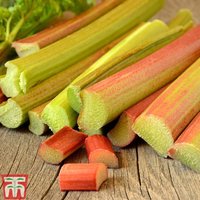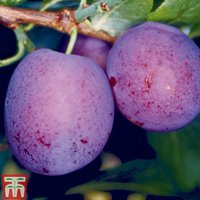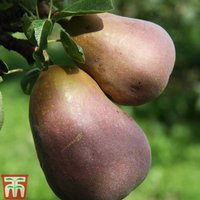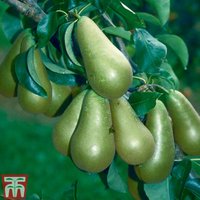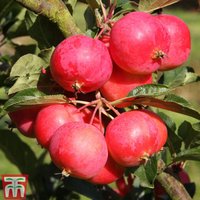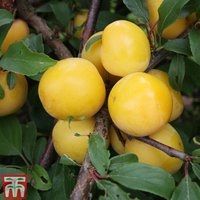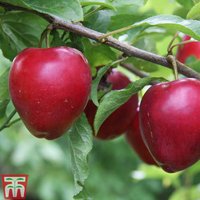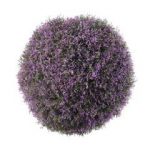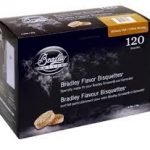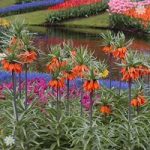Category Archives: Plants & Seeds
Blackberry ‘Navaho’
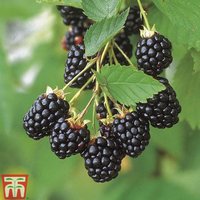 Blackberry ‘Navaho’ is a productive, mid season variety, producing large fruits from the end of July, which are easy to harvest from its upright, thornless stems. The fruits are firm and juicy – delicious eaten fresh or used in jams and pies. Like all Blackberries it is easy to grow, yielding excellent crops year after
Blackberry ‘Navaho’ is a productive, mid season variety, producing large fruits from the end of July, which are easy to harvest from its upright, thornless stems. The fruits are firm and juicy – delicious eaten fresh or used in jams and pies. Like all Blackberries it is easy to grow, yielding excellent crops year after
Corylus avellana ‘Ennis’
Corylus avellana ‘Hall’s Giant’
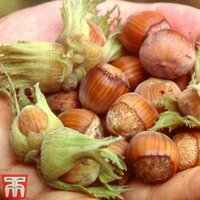 A traditional and old variety, producing reasonably large, pointed nuts with a lovely flavour. Corylus avellana ‘Hall’s Giant’ is reliable and easy to grow, coping well with adverse conditions. It makes an excellent choice for the gardener, with the added benefit that it provides good ornamental value too.
A traditional and old variety, producing reasonably large, pointed nuts with a lovely flavour. Corylus avellana ‘Hall’s Giant’ is reliable and easy to grow, coping well with adverse conditions. It makes an excellent choice for the gardener, with the added benefit that it provides good ornamental value too.
Redcurrant ‘Laxton’s Number One’
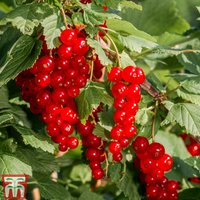 A traditional variety and still very widely grown. Redcurrant ‘Laxton’s Number One’ produces generous crops of top quality fruits which are borne in long strings from July. The glossy, scarlet fruits are small but flavoursome. This well respected variety flowers slightly later than many varieties, avoiding damage from late frosts.
A traditional variety and still very widely grown. Redcurrant ‘Laxton’s Number One’ produces generous crops of top quality fruits which are borne in long strings from July. The glossy, scarlet fruits are small but flavoursome. This well respected variety flowers slightly later than many varieties, avoiding damage from late frosts.
Plum ‘Avalon’
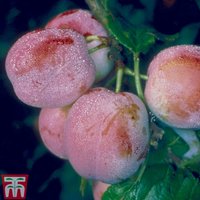 A dual purpose plum producing some of the finest quality dessert fruits. In August, the large, red fruits begin to ripen. Pick them slightly underripe, while they are paler in colour, for use in the kitchen. They are best left on the tree for eating fresh, until they have turned to a dark crimson colourwith
A dual purpose plum producing some of the finest quality dessert fruits. In August, the large, red fruits begin to ripen. Pick them slightly underripe, while they are paler in colour, for use in the kitchen. They are best left on the tree for eating fresh, until they have turned to a dark crimson colourwith
Plum ‘Guinevere’
Plum ‘Herman’
Physocarpus opulifolius ‘Diabolo’
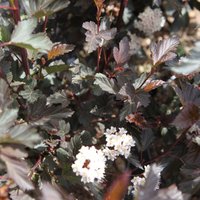 Physocarpus opulifolius ‘Diablo’ bears clumps of small white flowers with a subtle pink hue during early summer. The blooms contrast spectacularly with the deep copper-red, handsome foliage and shining red seed heads follow, lasting well into autumn. This modern shrub appears even more impressive when planted alongside a range of other shrubs with colourful foliage,
Physocarpus opulifolius ‘Diablo’ bears clumps of small white flowers with a subtle pink hue during early summer. The blooms contrast spectacularly with the deep copper-red, handsome foliage and shining red seed heads follow, lasting well into autumn. This modern shrub appears even more impressive when planted alongside a range of other shrubs with colourful foliage,
Physocarpus opulifolius ‘Lady in Red’
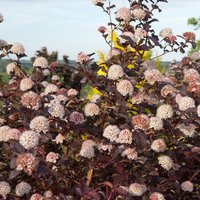 Physocarpus opulifolius ‘Lady in Red’ bears clumps of delicate pinkish flowers from early summer, followed by red berries that linger well into autumn. This easy to grow shrub is weatherproof and produces stunning ruby-red foliage, hence its name. Physocarpus ‘Lady in Red’ is perfect for adding a splash of colour to mixed borders and plants
Physocarpus opulifolius ‘Lady in Red’ bears clumps of delicate pinkish flowers from early summer, followed by red berries that linger well into autumn. This easy to grow shrub is weatherproof and produces stunning ruby-red foliage, hence its name. Physocarpus ‘Lady in Red’ is perfect for adding a splash of colour to mixed borders and plants
Pear ‘Obelisk’
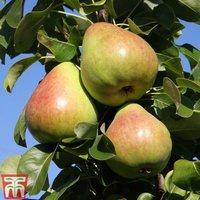 Perfect for the smaller garden, Pear ?Obelisk? is a dwarf with an upright, columnar habit that requires less space than most varieties. Better still, it is self-fertile so you won?t need a pollination partner to ensure good crops. The sweet dessert fruits are green with a pleasing red flush, crunchy flesh and a mild flavour.
Perfect for the smaller garden, Pear ?Obelisk? is a dwarf with an upright, columnar habit that requires less space than most varieties. Better still, it is self-fertile so you won?t need a pollination partner to ensure good crops. The sweet dessert fruits are green with a pleasing red flush, crunchy flesh and a mild flavour.
Pear ‘Onward’
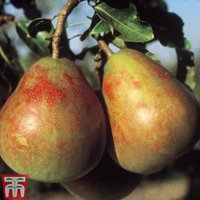 A superb garden variety that produces yellow-green fruits with orange flushed skins. The creamy, white flesh is soft, sweet and juicy, reminiscent of its parent variety ?Doyenne du Commice?. Pear ?Onward? is a reliable cropper that grows well in the UK, with blossom that seems to resist the spring frosts every time.
A superb garden variety that produces yellow-green fruits with orange flushed skins. The creamy, white flesh is soft, sweet and juicy, reminiscent of its parent variety ?Doyenne du Commice?. Pear ?Onward? is a reliable cropper that grows well in the UK, with blossom that seems to resist the spring frosts every time.
Pear ‘Winter Nelis’
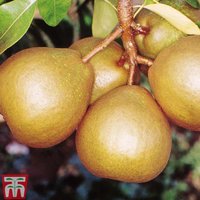 Extend the season with this late dessert variety that ripens in early November and stores nicely until January. Don?t be fooled by the dull, russet-skinned appearance of these little fruits ? their flavour is quite exceptional! Pear ?Winter Nelis? is ideal for cooking or eating fresh if you enjoy a firm texture.
Extend the season with this late dessert variety that ripens in early November and stores nicely until January. Don?t be fooled by the dull, russet-skinned appearance of these little fruits ? their flavour is quite exceptional! Pear ?Winter Nelis? is ideal for cooking or eating fresh if you enjoy a firm texture.
Pear ‘Conference’
Crab Apple ‘Laura’
Crab Apple ‘Nuvar Marble’
Plum ‘Mirabelle Countess’
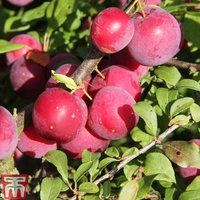 A versatile, dual-purpose cherry-plum that can be eaten fresh or cooked in pies and preserves. Plum ‘Mirabelle Countess’ produces red-skinned fruits which can be harvested in July and August. The fruits are larger than most Mirabelles, though smaller than a normal plum, and have a particularly sweet flavour.
A versatile, dual-purpose cherry-plum that can be eaten fresh or cooked in pies and preserves. Plum ‘Mirabelle Countess’ produces red-skinned fruits which can be harvested in July and August. The fruits are larger than most Mirabelles, though smaller than a normal plum, and have a particularly sweet flavour.








